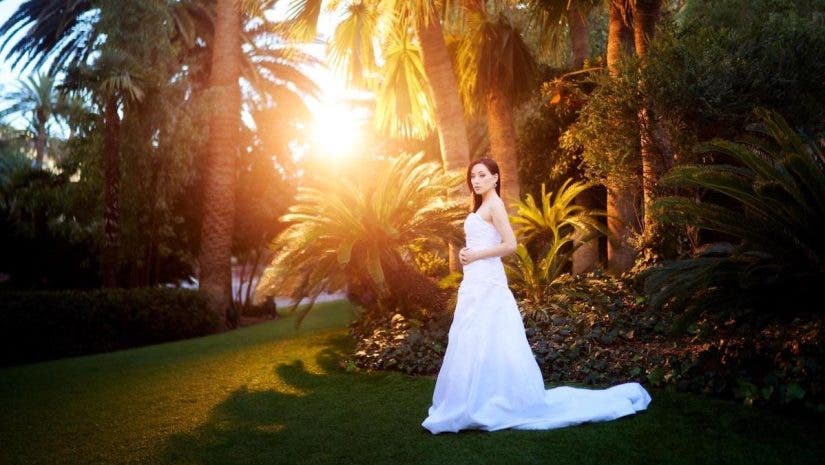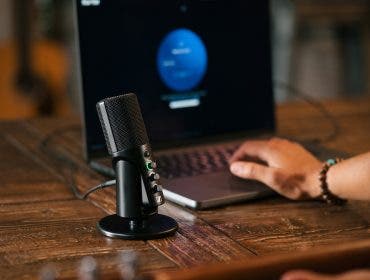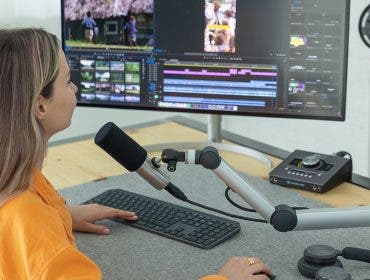One of the things most new photographers don’t consider when they explore the craft of wedding photography is lighting. Most photography genres allow you the freedom to choose what time of day you take photos. Although, with weddings, you have to deal with what you’re dealt with. If the light is bad, you have to create. If the weather is bad, you have to create. You don’t get the luxury of waiting for the light to be right. This is why it’s so important to be able to make your own light with off-camera flash. As someone that has been a Northwest Arkansas wedding photographer for more than a decade, I’ve been able to figure out what lights and modifiers are best for certain times of the day. In this article, I’ll share my knowledge so you can master wedding lighting for photography as well.

Best Gear for Wedding Lighting
Flashpoint Zoom Li-on X R2 TTL On-Camera Round Flash Speedlight
Every photographer needs a solid on-camera flash option. While I always prefer to use my flashes off-camera, some aspects of the wedding day are just too run-and-gun to set up a flash. The Flashpoint Zoom Li-on X R2 is the perfect option. Not only does it offer you plenty of power, but it can also go as low as 1/256th power for lower light situations.
The R2 also has a built-in radio system so you can trigger and control all your other Flashpoint lights. You can also do this while simultaneously popping the R2 flash. You’ll have full control and won’t need to trade out the on-camera flash for a dedicated trigger just to remove the light coming from the on-camera flash.
Flashpoint eVOLV 200 Pro TTL Pocket Flash Kit
Don’t let the small size of this light fool you. The Flashpoint eVOLV 200 Pro had 200ws of power. This can be enough to overpower the sun in a lot of situations. The small and compact size also makes it extremely easy to pack away. The battery life of this light will easily get you through an entire wedding day. For multiple years, just one of these eVOLV 200 pro lights was all I used when I needed an off-camera flash. The versatility and creative power of this light can take you a very long way.

Flashpoint XPLOR 400 Pro Compact TTL R2 Monolight
For situations when the Flashpoint eVOLV 200 Pro isn’t enough, the Flashpoint XPLOR 400 Pro has your back. I use this light for things like recreating a sunset look or backlighting situations that need more power. The 400 Pro is also an ideal light when you want to use larger modifiers that can drain off a good amount of power. That can include large softboxes, big umbrellas, and even snoots and grids depending on the situation.
Glow ParaPop II Portable Softbox w/Bowens Mount Adapter and OTA
Speaking of larger modifiers, the Glow ParaPop 38, to me, is the perfect size for a wedding day. It’s large enough for big beautiful wrapping light, but portable enough to not require a ton of extra packing space. You’ll also love the mechanism used to open the softbox. This Parasnap-style box gives you an unobstructed interior while still providing a fast and easy way to open the box. There’s no need for messing with attaching a ton of rods into a speed ring while the couple waits for you to set up.
The size of this softbox is also manageable when used outside during portrait time with the couple. But, like all softbox style modifiers, you’ll want some help managing the light if there is any wind.

Glow EZ Lock Octa Quick XXL Softbox With Bowens Mount
While the Glow EZ Lock Octa XXL is almost double the size of the Parasnap we talked about before, it’s still extremely fast and easy to set up. Featuring an umbrella-style opening mechanism, you can go from packed to ready in a matter of seconds.
While, for me, this modifier is a bit too large to manage for an outdoor portrait location, this softbox is absolutely wonderful for use with indoor family formals. This is especially true when photographing larger groupings where you need a bit more coverage while maintaining the soft light quality you want. I’ll also take this large modifier outside if I have help, or if I’m in a location requires me to block any unwanted gusts of wind.

Indoor Wedding Lighting Gear
While all the above lights and modifiers are totally acceptable solutions for indoor lighting, I have come up with a set of gear that I feel is ideal for the way I shoot. When I set up to photograph indoor activities (such as the reception), I know I’m going to be there for a long time. Therefore, I don’t mind taking the time to set up multiple lights for a more dynamic look.

Over the years, what I have found to be perfect for me is a three-light setup. I’ll use one Lion X R2 on camera and then two eVOLV 200 Pros on stands placed on the outside of the dance floor. The on-camera light gives me an even, forward-facing light so I can always see my subjects. The two lights on the stands act as a rim light that I will also let flare into my lens for a dramatic look. I can also turn lights on and off from the Lion X R2 depending on the direction I’m shooting.

Outdoor Wedding Lighting
When it comes to outdoor wedding lighting, less is more. For example, I almost never add my own lighting for a wedding ceremony. In the small number of times I have, it was simply for a quick one-off creative image where the popping of a flash wouldn’t be overly distracting. Or, in one other circumstance, it was just way too dark and there was no way to get usable images without some help from lighting.

Then when it comes to outdoor portraits, I still prefer to keep a light load of gear. Almost all outdoor images where I use off-camera flash are done with a single light. I prefer to be as mobile as possible so that we can walk from one location to the next without spending a ton of time loading and unloading gear. Even if you work with an assistant, having more than one light can be a task to move. But even working without an assistant, I can mange a single light on a stand pretty easily.
That said, I will always have multiple lights and stand on in my vehicle or ready at the venue. Sometimes there are situations where you have an idea or a location that will simply need more than one light. In those situations, I’ll just run over (or ask my second photographer) to grab any extra gear I may need. Although, these situations are few and far between.

Instead of complicating things with a ton of light, I prefer to use natural light to my advantage. What I’ll do is look for areas of light where I can let the natural light do the heavy lifting, and then simply bring in my own light to finish the job. At other times, I’ll use my flash to not only light the couple but the scene as well.
How to Start Your Wedding Lighting
The first tip I have for wedding lighting is to learn the basics. Know how to control your flash and learn what settings you can manipulate to get the most out of your gear. When I use a flash, I am always shooting manual on my camera and flash. I’m setting things up for one situation, so I don’t need to rely on my camera or flash to tell me what it thinks the exposure should be.

Once you learn the basics, the hardest part to learn will be where to place the light. When I was learning, I would look for interesting light in my everyday life. When I noticed something intriguing, I’d analyze it. What’s making it interesting? Is it the color? The shape? The angle? Figure out what exactly is causing that light and then figure out how to recreate that light if it was no longer there.






